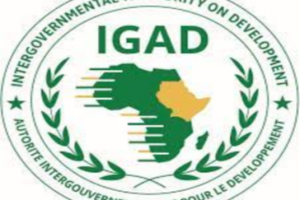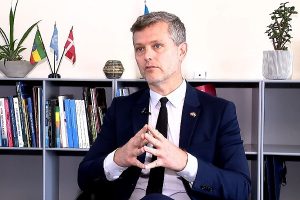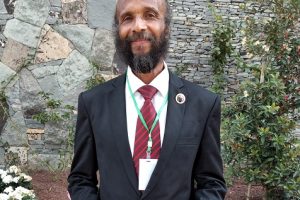
The Ethiopian Orthodox Church (EOC) is one of the institutions that has long been using traditional education in the country.The EOC traditional schools serve as a cornerstone for the existence and furtherance of the Geez language and its culture.
They have also played a very important role in the development of Ethiopian Christian religious and philosophical thoughts, depicted in different manuscripts. The main objective of the EOC education is to train successor deacons, priests and monks for the preservation of the Church’s doctrine. As such, EOC acted as a principal agency in the preservation and transmission of national cultural heritages.
Concerning such a Church education Pankhurst wrote that it “provided elementary and intermediate schools, and monastic universities with branches devoted to theology, history, poetry, music, medicine and surgery. All of which function to this day, forming one of the oldest continuous systems of education in the world.”
For centuries, The EOC education has been deeply part of its religious education, life and ethos. It is provided at all levels of education from elementary to higher levels in a wide variety of fields, including reading and writing, theology, poetry and music, art and history as well as law and traditional medicine. Conventionally, the Ethiopian traditional education emphasizes on the oral form of learning that encourages learning through rote learning or memorization.
Different scholars who studied the tradition agreed that it has four levels which starts at the school of reading and ends at the highest level of the scholarship whereby students are trained on how to interpret the sacred texts. The four levels of the scholarship are briefly discussed here.
The School of Reading ( “nibab bet”) can be seen as an elementary school.The School of Zema ( “Zema bet”) is regarded as the education of spiritual relics or as a school of Sacred songs. Zema bet is the equvalent of the modern school system’s junior and senior high school, the School of Qene ( “Qene bet”) is a school of poetry where the Qene teaching and learning process is going on. It is the equivalent of a college education, the School of Commentary (“Metshaf bet”) has the status of a univesity, where different manuscripts are prepared, studied and interpreted inQene Centers… the form of commentary.
Usually, traditional schools are known as «Yeabnet Timhirt Betoch»,while the students are identified as «Yeqolo Temariwoch» who are begging pices of bread and grain in the name of Jesus Christ and his beloved mother St. Mary.They learn eating roasted grains such as wheat bean, sourgum, barley,maiz – instead of delicious foods. Conventionally, the Ethiopian traditional education emphasizes on the oral form of learning that encourages learning through rote memorization.
Qǝne is one of the most original expressions of the Christian Ethiopian literature. It is also an important segment of Ethiopian ecclesiastical scholarship which is situated at the third level of ecclesiastical education, the Qene bet, is a highly sophisticated poetry.It is the fruit of long pondering on the texts. High creativevity is a must and requires a higher skill.
It generates lively discussion about the merits of a particular composition. Qene uses punes or word plays so that there is a surface meaning and a deeper meaning (Wax and Gold) in a way difficult to convey in translation. Because Qene requires great skill, many of its practitioners attain high positions in the Church. It takes a minimum of 12 years to become a teacher in the field after completing the required study in the Qene bet.
Qene is a new hymn and a poetic literature, which is composed in Geez language.It, has also a spontaneous character. It can be called ǝngǝda dǝrsät. Meaning it is composed on a daily basis. If Qene is composed and spoken in a given place once, repeating or plagiarizing is not allowed in other places.
The word Qene is derived from a Geez verb “qaneye ” and “teqeneye ” meaning governed and and render service.There are many traditional schools of Qene in the country.The centers are Wadla , a place of Yohannes Geblawi,Washra ,the birth place and Gubae ( Qene assembly) of Tekle ze Washera Gongi, a place of Qene schoolar Ebbuy Kasa, Debre Tsilalo St . Amanuel and Gondar, Gelead Qenebet,where the renowned Church shoolare Liqo Kifle Yohannes thought Qene.
Wadla is found in North Wollo especially in Wadla district. Washra , Gonji and Debre Tsilalo are found in West Gojjam , Gonji qollela district. Debre Tsilalo Amanuel is a place, where a female teacher Emeyte Gelanesh Haddis thought Qene for 53 years. Currently, Chegode Hanna also is considered as a University of Qene in the country. Because we don’t find 400 and 500 students of Qene in any place where as in Chegode Hanna Church, which is located in West Gojjam. .Liqe- Liqawent Yared Shiferaw is a teacher of Qene in Debre Medhanit Chegode Ḫanna.
In addition, Dima Georgis, Debre Warq Maryam, Debre Birehan Bichena Georgis, Mertule Maryam, Debre Tsion Gunde Waine Maryam, Melakke Melaekt Qeranio Medhane Alem, Debre Gennet Mota Georgis Dejen Georgis, which are located in East Gojjam, Gedame Asqetis Tekle Haimanot we Kiristos Semira and Debre Genet St. Elias and Beata Lemaryam which are located in the North and South parts of Däbreä Marqos town serve as Qene centers or Yeabnet Timihiret bet .
Each school has its own distinct traditions. The Wadla Qene is particularly difficult on the account of its composition and interpretation, using many equivocal words, allusions and allegoric figures.The Gonji Qene is difficult to understand due to its profound meaning and its complicated concepts and images.The Washra Qene is relatively simple; its meaning can be decoded even by some one who has not specialized in Qene.The Gondar Qene is characterized by its melancholic mood, didactic inferences and allusion in the teaching of the Qene.
The education of Qene has its own learning and teaching processes. In Qene bet, the students read, study and examine manuscripts of grammar (Sewisw or Giss first) which consists of Эrba qimmir, Эrba giss and Agebab .
Then Qene Qotera is the system to start to compose Qene and its mastering go one after the other. The students attend the allegorical interpretation of the bible which is provided by their Qene teacher every morning. In Qene bet, the sources are used as fundamental tools to produce Qene.
For a century, the sources had been narrated, interpreted by Qene scholars allegorically among their disciples daily and the disciples, who stimulated by the narration of their teacher produced their compositions in different ways, based on the monthly and yearly festive days of the Saints. Before composing Qene, the students study words of Ethiopic using the order of the alphabet through repetition.
The first group tells the formation of verbs, and the second group tells its translation.The seniors guide the beginners to use the exact rhymes, and rhythms, the exact gender and corrects the structure of the grammar. In the learning and teaching processes, a student is assisted by his senior to master the art of Gubae Qana with his/her teacher’s supervision. After completing Gubae Qana, a student is promoted to Ze Amlakiye and so on .
The Ethiopian Herald Sunday Edition 29 September 2019
BY TADDELE GEDLIE TSEGAYE (PhD)





